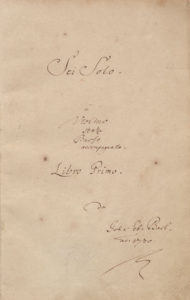BACH PARTITA NO. 1 IN B MINOR, BWV 1002, ALLEMANDE
MUSIC INSTRUCTION - BACH SOLO VIOLIN REPERTOIRE
In his Partitas, Bach treats the traditional dance form with great liberty, accentuating virtuosity, melodic inventions, rhythm and beautiful counterpoint elaborations. Master Teacher Miriam Fried has pervasive knowledge and understanding of Bach's Violin Partitas and Sonatas and in her Masterclasses considers all of these very demanding themes, combine it with technique and exposes the importance of all these arguments in her outstanding masterclasses.
Miriam Fried is a noted pedagogue and on the faculty of New England Conservatory. She gives master classes throughout the world and has been recognized for many years as one of the world’s preeminent violinists. Miriam Fried is the author of Bach’s complete online video encyclopedia for violin solo repertoire and a Master Teacher at iClassical Academy.
Here an excerpt of her Masterclass recorded in May 2016 for iClassical Academy
"The Bass, in a solo violin piece, is your responsibility". With these words, Professor Fried explains how you cannot sacrifice the bass because of your focusing on the melody.
History of the piece
 Bach composed this Partita, together with all Partitas and Sonatas, in 1720, when he was the Kapellmeister at the court of Kothen, a town of the German region of Saxony. His intention was clearly to redesign the possibility of Violin, by writing compositions which demanded different voices and were able to lead both harmony and melody at the same time. To testify this, the title that he chose for the full book of 3 Sonatas and 3 Partitas was "Sei solo / à / Violino / senza /Basso/accompagnato". and many judged from the fair copy that he prepared that he had the intention to find a publisher.
Bach composed this Partita, together with all Partitas and Sonatas, in 1720, when he was the Kapellmeister at the court of Kothen, a town of the German region of Saxony. His intention was clearly to redesign the possibility of Violin, by writing compositions which demanded different voices and were able to lead both harmony and melody at the same time. To testify this, the title that he chose for the full book of 3 Sonatas and 3 Partitas was "Sei solo / à / Violino / senza /Basso/accompagnato". and many judged from the fair copy that he prepared that he had the intention to find a publisher.
This book, probably revised by his second wife, Anna Magdalena, didn't find any publisher during his life, perhaps because the so much innovative feature of the compositions didn't convince his contemporary publishers. But as we all know, nowadays the scores of these six compositions are amongst the most sold and published ones of all times.
What is treated in the Masterclass
All violinists know that the structure of the instrument doesn't allow to play more than two strings at a time. Nevertheless, Bach was able to secure the presence of many voices, and independent or continuous harmonic lines, through 3 or 4 note sequences in Arpeggio, or the system of Ostinato on the same string. This way Bach gives the possible broad musical message, and the listener completely forgets the material absence of polyphony and merges into the variety of different voices chasing each other. This fundamental characteristic is always in the basement of Miriam Fried's teaching, and every technique for bowing, fingering, and interpretation is continuously at the service of rendering the polyphony.
"The only real tool you have is the sound!" and that's why it becomes so important to have your sound tell what you mean, as Professor Fried also explains and shows in her video encyclopedy "BACH: ASSEMBLING THE MUSICAL PUZZLE".
Miriam Fried's Masterclasses and her video encyclopedy about Bach are available on iClassical Academy.
